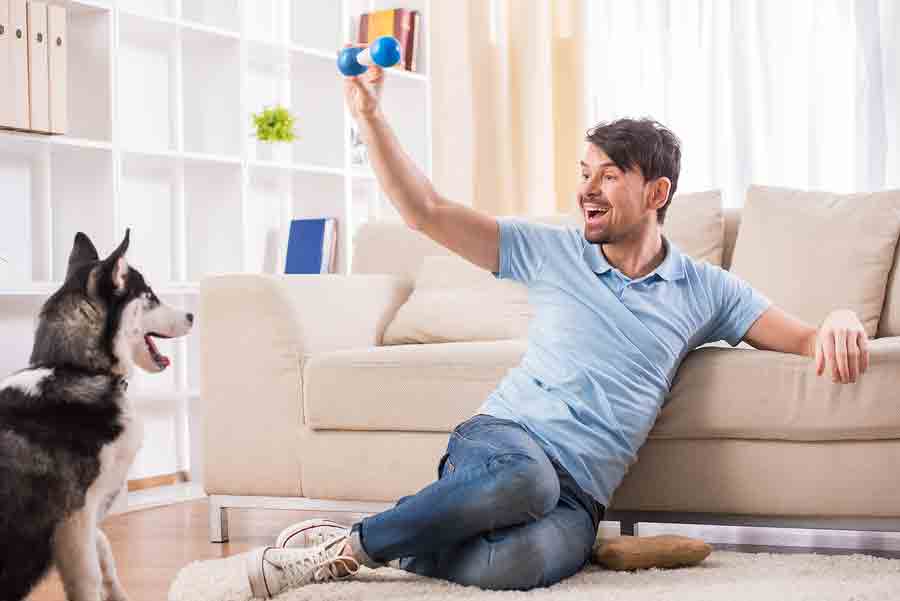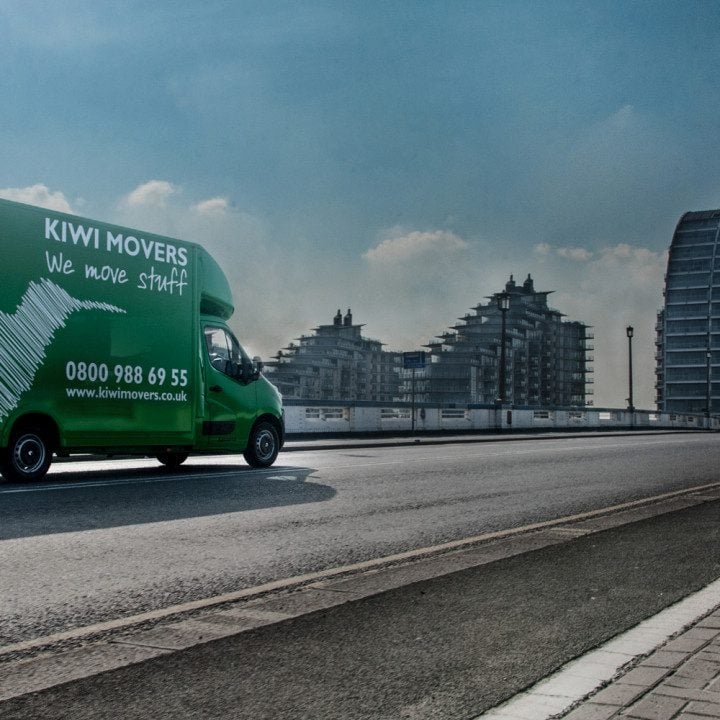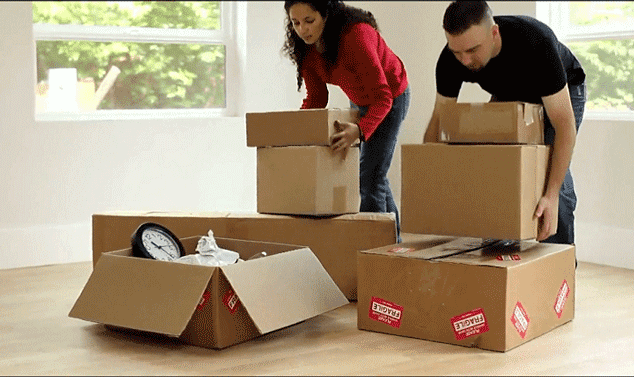Moving house can be a stressful time for even the calmest of people, so imagine how crazy it must be for a family pet that doesn’t understand why his entire habitat has been boxed up and driven away. Thankfully, our pets are pretty adaptable, but it’s important that they experience a low stress, smooth transition between homes to ensure they settle quickly in their new residence.
What to do with pets on house move day?
You really have two options; find somewhere for your pet to stay for a couple of days and collect him once you’re fully moved, or have the pet with you throughout the move process. Keeping the dog or cat elsewhere means you can focus on the move without subjecting your pet to the noise and activity of packing, cleaning and removals.
Boarding a dog or cat during a house move
If you choose the option of boarding your pet, you can expect to pay around £30 per day for dogs and a little less for cats. That will typically include a couple of walks and feeding. Some boarding kennels will also include collection and drop off as part of the service, but that may not be valid if you’re moving far away.
If you’ve got friends who can look after your pet during your move, that may be preferable (and cheaper). This is especially true if your dog has anxiety issues or has never boarded before.
To find a London pet boarding facility to suit your budget, check out this handy website.
Moving house with a dog or cat in tow
If boarding your pet isn’t a viable option, at the very least you should consider setting aside one room, preferably one that has already been emptied, in which to keep your pet during the move. Fill it with a few toys, some treats and somewhere comfortable for your pet to relax. Having dogs and cats roaming freely while removals professionals are carrying heavy boxes can be dangerous for all concerned, not to mention unpleasant for the dog or cat. But be sure to let your pet out for breaks.
Transporting your pet when moving house
Safety comes first whenever you transport your pet, and that’s no different when you move house. If you are driving to your new home, transport your dog or cat in the normal way, using a crate or a pet bed fitted securely in the boot. If the new home is close to your current home, you can typically do this without much fuss.
For longer journeys, ensure that your dog has access to a supply of clean water. Non-spill water bowls can be super handy on long journeys. It’s also advisable to give a dog plenty of exercise prior to a long car journey and to stop for rest breaks at least once every two hours. Cats are best transported in a roomy, clean carrier.
Top Moving Tip
If your pet isn’t used to traveling in the car, introduce him to the vehicle gradually over the weeks prior to the move. Make the environment as positive and rewarding as possible. Just let your dog or cat explore, put some treats in the boot and make the back of the car seem like a good place to be. You don’t even need to leave your driveway to do this and having a calm pet on moving day can make a huge difference.
End-of-tenancy cleaning for pet owners
One of the most common reasons for withheld deposits is cleaning (or claims about lack thereof). Research we conducted found that insufficient cleaning on check-out accounts for almost a third of withheld deposits. Hiring a professional to carry out end-of-tenancy cleaning reduces stress, hassle and may increase your chances of a swift deposit return – it’s why more and more house movers are hiring professionals to perform an end-of-tenancy clean.
End-of-tenancy cleaning can be especially helpful for tenants who’ve got cats or dogs. Fur, stains on the carpet, ‘doggy smell’ and even scratched doors can all result in a fully or partially withheld deposit, so it’s worth considering hiring a team of professional cleaners who know exactly how to take a well lived-in house and present it back to a landlord. Plus, presenting a copy of your cleaning invoice on check-out will certainly make your check-out process run a little smoother.
House cleaning tips for pet owners
- Air filters with built-in ionisers are excellent for getting rid of any pet smells. Even the ones you’ve stopped noticing.
- Go over all soft-furnishings with a lint roller. This stops you from transporting any pet hair from one house to the next. Once your furniture is out of the way, lint roll any areas of the carpet that the vacuum has failed to pick up.
- To get rid of pet hair trapped on curtains or other soft areas, stick on a single rubber glove, wet it and ‘swipe’ the affected areas. The wet hair will ball up and stick to your glove and you can peel it off with your free hand.
- Don’t steam clean any carpets that you suspect may be urine stained. The heat will bond the ammonia to the fibres in the carpet. Instead, use an odour-neutralising carpet cleaner to remove the scent. If staining is visible, elbow grease and soapy water are the best solution.
Kiwi Movers’ top tips for introducing a dog to a new home
Dogs and cats don’t really understand the nuances of the property market. You might be delighted to be upgrading to a suburban semi, but to your dog, all this means is a whole bunch of new sights, smells and (more specifically to cats), places to get used to.
But you can make the new home transition for pets a little bit easier.
- If the new place you’re moving to is near enough for it to be convenient, take your dog on a little reconnaissance trip. As soon as you get your dog onto the pavement outside, give him a little treat. This builds positive associations with the new location.
- Introduce new scents slowly. If the owners of the house you’re moving to are open to it, a great way to help your dog used to his new environment is to give him something that carries the scent. For example, a doormat or even a newspaper that’s been in the house will carry a range of scents. Introduce the scents to your dog while stroking him, playing with him or giving him a treat and he’ll build a positive association with them. That way he’ll be familiar with a number of the scents when arriving at his new home.
- Bring some of the scents from your old place. It’s tempting when moving into a new home to have a bit of a clean out, and that could well include dog beds and bedding. However, don’t underestimate the value of familiarity when settling your dog into his new pad. An old blanket can be just what he needs to feel secure while he’s getting used to his new surroundings.
- Be tolerant. It’s possible that your dog may want to mark his scent in the new home, even if he’s perfectly house trained. This is a natural reaction to the overwhelming array of scents left behind by the previous owners. Try not to get too upset if this happens.
- With old dogs who may have vision impairments, it’s really important to make navigation easy. There should be a clear path between their bed and the door to the garden, so they can indicate if they need to go outside quickly without tripping over.
- If your new home has polished floors or tiles and your old home was fully carpeted, keep your dog on a lead when you first take him inside. This will stop him slipping if he’s not used to the slick flooring.
- If your new place has screen doors or patio doors, consider putting some stickers at dog eye level so your dog can easily tell the difference between glass doors and open doors. As you can tell from the video below, that’s not always as easy as it seems, although fortunately, these dogs are treating open doors as if they are closed, which is preferable to the alternative.



















